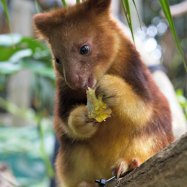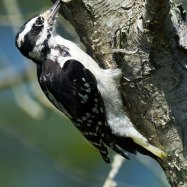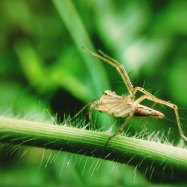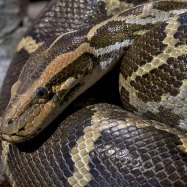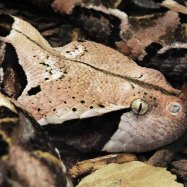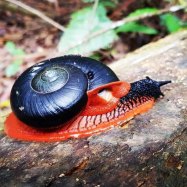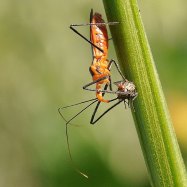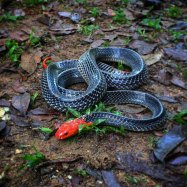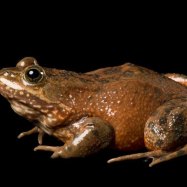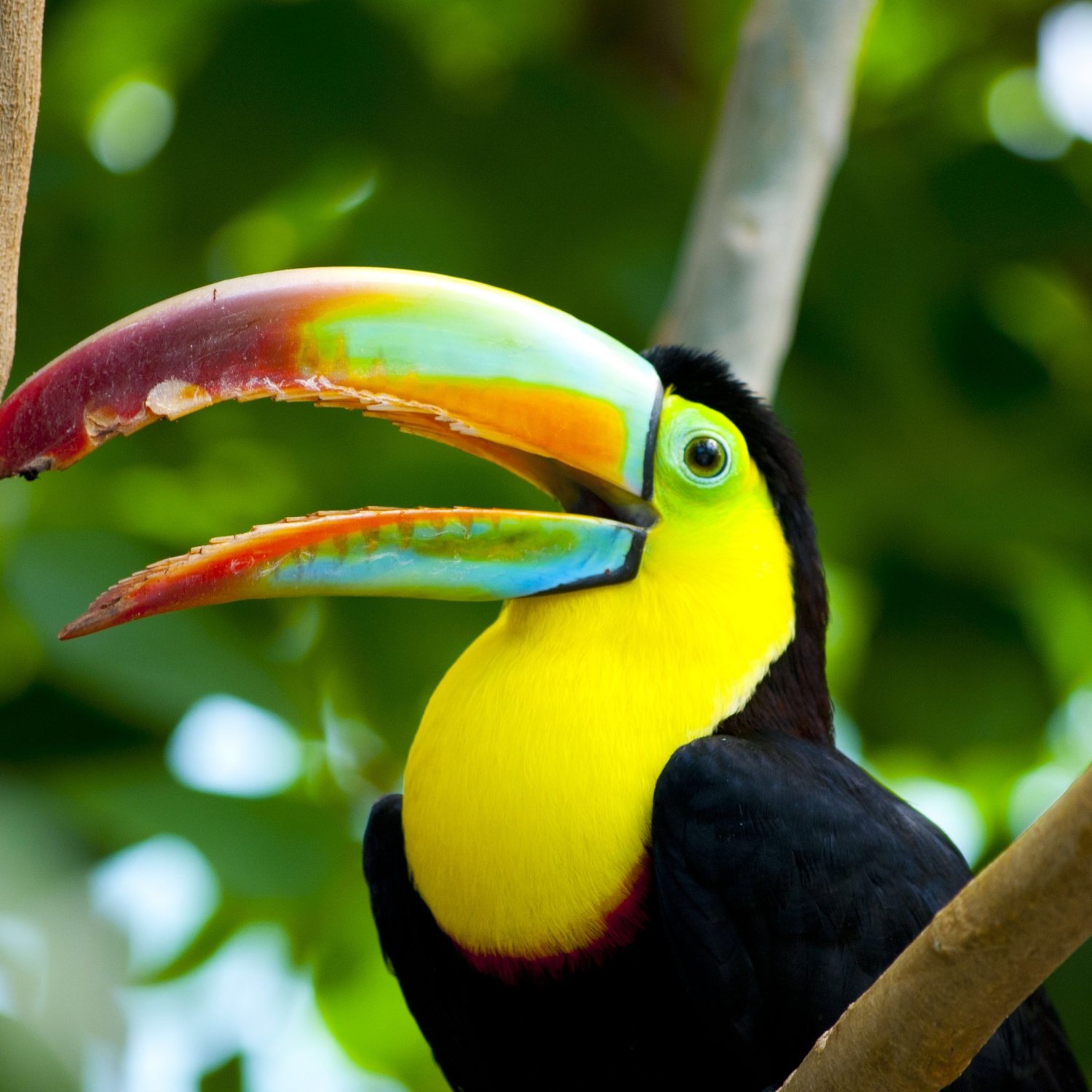
Toucan
Approximately 20 to 25 inches (50 to 64 centimeters)
The toucan, with its iconic large and colorful bill, is a fascinating animal found in the tropical regions of Central and South America. Coming from the Ramphastidae family, these beautiful birds can grow up to 20-25 inches and have a unique body shape with a large body, short wings, and of course, that famous long and curved bill. Learn more about these amazing creatures and their natural habitat today! #Toucan #Animals #CentralAmerica #SouthAmerica
Animal Details Summary:
Common Name: Toucan
Kingdom: Animalia
Habitat: Rainforests and tropical forests
Toucan: The Magnificent Bird of the Tropical Rainforest
Welcome to the world of toucans, where vibrant colors, a distinctive bill, and the enchanting sounds of the rainforest come together to create a truly captivating creature. With their colorful plumage and unique features, toucans are undoubtedly one of the most magnificent birds in the animal kingdom. These intriguing creatures are a sight to behold and have captured the hearts of animal lovers all around the world. Let's dive into the wonderful world of toucans and discover what makes them so special Toucan.The Scientific and Common Names
The scientific name of the toucan is Ramphastos toco, and it falls under the kingdom Animalia, phylum Chordata, and class Aves. Its order is Piciformes, and it belongs to the family Ramphastidae. The name "toucan" is derived from the Tupi word tukana, meaning "big beak." It is a fitting name for this magnificent bird, as we will discover more about its most distinctive feature later on.Habitat and Distribution
Toucans are native to the tropical regions of Central and South America, mainly found in the dense rainforests and tropical forests of these areas. Some of the countries where toucans can be found include Brazil, Colombia, Peru, and Ecuador. However, due to deforestation and habitat loss, they may also be seen in urban areas and secondary forests.Within their natural habitat, toucans prefer to stay in the highest parts of the trees, where they can easily reach ripe fruit and have a better vantage point to spot potential predators. They have adapted well to living in the rainforest, and their vibrant colors help them blend in with the colorful foliage and flowers Taimen Fish.
Feeding Method
Toucans are frugivorous, meaning that they primarily feed on fruits. However, they also consume insects, small reptiles, and bird eggs, making them omnivorous. Their bill is perfectly designed for picking and peeling fruits and berries, and its surface is covered in ridges that help them grip food and drink water.Their diet consists of a variety of fruits, including papaya, mangoes, bananas, and figs. They are also known to feed on fruits that have been fermented, which can result in them becoming slightly intoxicated. It is truly a unique experience to see a tipsy toucan flying through the rainforest.
Toucans in the Rainforest
The lush and dense rainforests of Central and South America are the most magical places to observe toucans in their natural habitat. As these birds are active during the day, you can spot them flying from tree to tree, foraging for food. They are highly social creatures and are often seen in pairs or small flocks. Toucans also have a unique way of communicating with each other through a series of calls and songs.Their presence in the rainforest is essential for the ecosystem as they help disperse seeds and pollinate plants. These birds are also an indicator of a healthy rainforest, as they require a diverse range of fruits to thrive. Sadly, due to the destruction of the rainforest, the toucan's habitat is continuously shrinking, making them more vulnerable to extinction.
Distinctive Features
There is no doubt that what makes toucans stand out is their unique appearance. These birds have a large body, short wings, and a long and curved beak that can be almost two-thirds of their body length. Their beaks are made of keratin, the same material as human hair and nails, making it lightweight and sturdy.The vibrant colors of toucans are a treat to the eyes. They have black bodies with vivid markings of white and vibrant colors like yellow, orange, and red. These colors are used for camouflage, attracting mates, and as a warning to predators.
Size and Measurements
Toucans are typically between 20 to 25 inches (50 to 64 centimeters) long, with a weight ranging from 11 to 24 ounces (300 to 680 grams). Their beaks alone can be around 7 inches (17 centimeters) long, and despite their large size, toucans are relatively lightweight. They have small feet with two toes in front and two behind, which are used for perching and climbing.Toucans and Humans
Toucans have been a subject of fascination for humans for centuries, with their distinct appearance and unique behavior. These creatures have been featured in various artworks, literature, and even as mascots. In Brazil, toucans are considered a national symbol and featured on currency and postage stamps.However, the spread of deforestation and poaching has significantly impacted toucan populations. These birds are often captured and sold in the illegal pet trade, causing harm to their natural populations. Moreover, the loss of their habitat has forced them to adapt to urban environments, where they face threats such as vehicle collisions and industrial pollution.
Conservation Efforts
To protect this magnificent bird from extinction, several conservation efforts have been put in place. One of the most significant steps is the creation of protected areas in their natural habitats, such as national parks and reserves, where toucans can thrive without human interference.Organizations have also been actively working on educating the public about the importance of the rainforest and its inhabitants, including toucans. By raising awareness, people are more likely to make conscious decisions that will benefit these birds and their habitats, such as reducing their carbon footprint and opting for sustainable practices.
Conclusion
In conclusion, toucans are truly magnificent birds that have captured the hearts of many. From their striking appearance to their essential role in the rainforest ecosystem, there is no doubt that toucans are a vital part of our planet's biodiversity. However, their survival is threatened by human actions, and it is our responsibility to protect them and their habitat.Let us admire and appreciate the beauty of toucans from a distance and support conservation efforts to ensure that these unique birds continue to thrive in the wild. The tropical rainforest would not be the same without the enchanting presence of toucans, and it is up to us to preserve this natural wonder for generations to come.

Toucan
Animal Details Toucan - Scientific Name: Ramphastos toco
- Category: Animals T
- Scientific Name: Ramphastos toco
- Common Name: Toucan
- Kingdom: Animalia
- Phylum: Chordata
- Class: Aves
- Order: Piciformes
- Family: Ramphastidae
- Habitat: Rainforests and tropical forests
- Feeding Method: Frugivorous (fruit-eating)
- Geographical Distribution: Central and South America
- Country of Origin: Brazil
- Location: Tropical regions of Central and South America
- Animal Coloration: Black, white, and vibrant colors like yellow, orange, and red
- Body Shape: Large body, short wings, and a long and curved bill
- Length: Approximately 20 to 25 inches (50 to 64 centimeters)
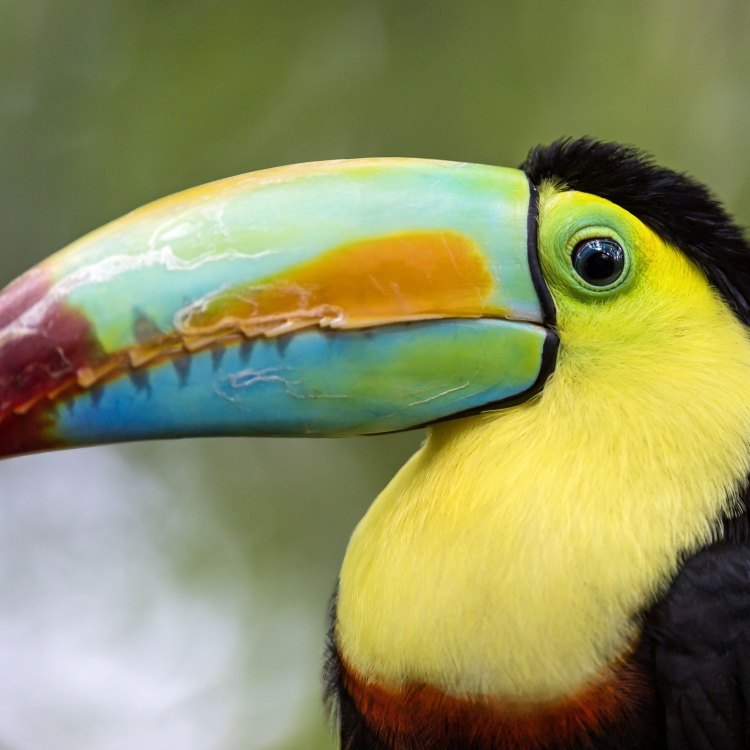
Toucan
- Adult Size: Medium-sized
- Average Lifespan: Approximately 15 to 20 years in the wild
- Reproduction: Sexual
- Reproductive Behavior: Monogamous
- Sound or Call: Loud croaking or yelping sounds
- Migration Pattern: Non-migratory, but may perform local movements in search of food and suitable habitat
- Social Groups: Usually found in small groups or pairs
- Behavior: Active during the day (diurnal), spends most of the time in trees, and is known for its aerial acrobatics
- Threats: Habitat loss, deforestation, capture for pet trade, and illegal hunting
- Conservation Status: Least Concern
- Impact on Ecosystem: Important seed dispersers for many plant species in the rainforest
- Human Use: Tourism attraction and symbol of tropical biodiversity
- Distinctive Features: Large and colorful bill, long tail feathers, and bright plumage
- Interesting Facts: Toucans have a unique adaptation that allows them to regulate their body temperature by adjusting blood flow to their bills
- Predator: Large birds of prey, snakes, and small mammals
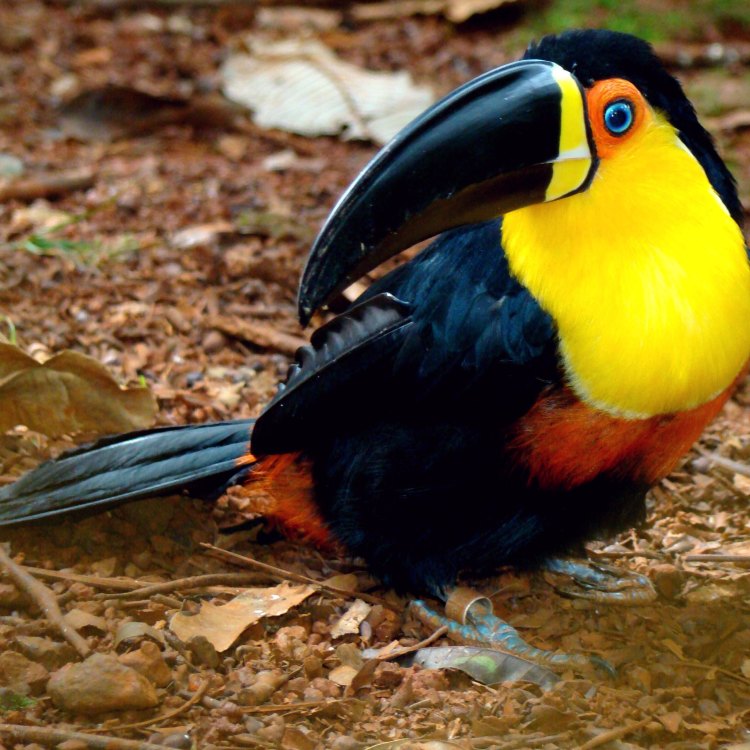
Ramphastos toco
The Fascinating Toucan: A Master of the Rainforest Skies
In the depths of the vibrant tropical rainforests, amongst the towering trees and dense vegetation, a creature with a distinctive feature stands out from the rest. With its large and colorful bill, long tail feathers, and bright plumage, the Toucan captivates anyone who has the chance to lay their eyes upon it. This unique bird has captured hearts and sparked curiosity for centuries, and it continues to do so today.Adult Toucans are medium-sized birds, ranging from approximately 17 to 22 inches in length and weighing around 4-8 ounces PeaceOfAnimals.Com. While their size may not be the biggest, their presence and colorful appearance make them stand out in the lush greenery of the rainforest. They are sexually reproductive, with both males and females having distinguishable features, making it easier to differentiate between the two.
On average, Toucans can live up to 15 to 20 years in the wild, and they are known for their monogamous reproductive behavior. They form lifelong bonds with their mate and only seek a new partner in the tragic event of death. This commitment to their partner is a beautiful example of loyalty and devotion that humans can learn from.
One of the most distinguishing features of Toucans is their loud, croaking or yelping calls. These birds are not shy about making themselves known, and their vocals can be heard from up to a mile away. They often use these calls to communicate with their group members, as well as to defend their territory from potential rivals.
Unlike many birds, Toucans are non-migratory, meaning they do not wander far from their home range Tibetan Fox. However, they may perform local movements in search of food and suitable habitat. This is because Toucans are highly dependent on the trees for both shelter and food, so they stay close to their source of sustenance.
Toucans are very social birds and are usually found in small groups or pairs. They are active during the day, making them diurnal creatures. You can often witness their energetic aerial acrobatics, chasing each other or playing with small branches. These playful displays are not only entertaining to watch but are also a way for them to strengthen their bonds and social hierarchies.
Sadly, Toucans are facing a variety of threats that threaten their survival in the wild. Habitat loss and deforestation are the biggest threats to these birds, as their home is being destroyed for agriculture and urban development. Toucans are also targeted by humans for the pet trade, where they are captured and sold as exotic pets. This not only disrupts their natural behavior but also puts a strain on the wild population. In some areas, they are also hunted for their meat and feathers, further impacting their numbers in the wild.
Despite these challenges, Toucans are still considered to be of "Least Concern" on the conservation status list. However, continuous efforts are being made to protect and preserve their natural habitat and raise awareness about their importance in the ecosystem.
Speaking of their impact on the ecosystem, Toucans play a vital role as seed dispersers in the rainforest. As these birds feed on various fruits and berries, they swallow the seeds whole and then disperse them through their droppings. This process aids in the growth and diversity of the forest, making Toucans important contributors to maintaining a healthy ecosystem.
Humans have a long-standing fascination with Toucans, and their use goes beyond their role in the ecosystem. These colorful birds have become a symbol of tropical biodiversity, attracting tourists from around the world to witness their beauty in the wild. Their unique appearance, loud calls, and playful behavior make them a popular attraction in nature reserves and zoos.
But it's not just their physical appearance that makes Toucans stand out; they also have a unique adaptation that sets them apart from other birds. These creatures have the ability to regulate their body temperature by adjusting blood flow to their bills. As toucans have large bills, this adaptation helps them cool down during hot weather and conserve heat during colder temperatures, making them adaptable to their surroundings.
As with any other species, Toucans also have natural predators in the wild. Large birds of prey, such as eagles and hawks, snakes, and small mammals, are the main threats to Toucans. However, their long, curved bills help them to defend themselves against potential predators, making them difficult to catch.
In conclusion, the Toucan is an extraordinary creature that has captured the hearts and minds of many. It's not just their colorful appearance or loud calls that make them unique; it's their role in the rainforest ecosystem and their fascinating behaviors that truly make them stand out. Let's continue to admire and appreciate these birds while also working towards preserving their habitat and ensuring their survival for generations to come.
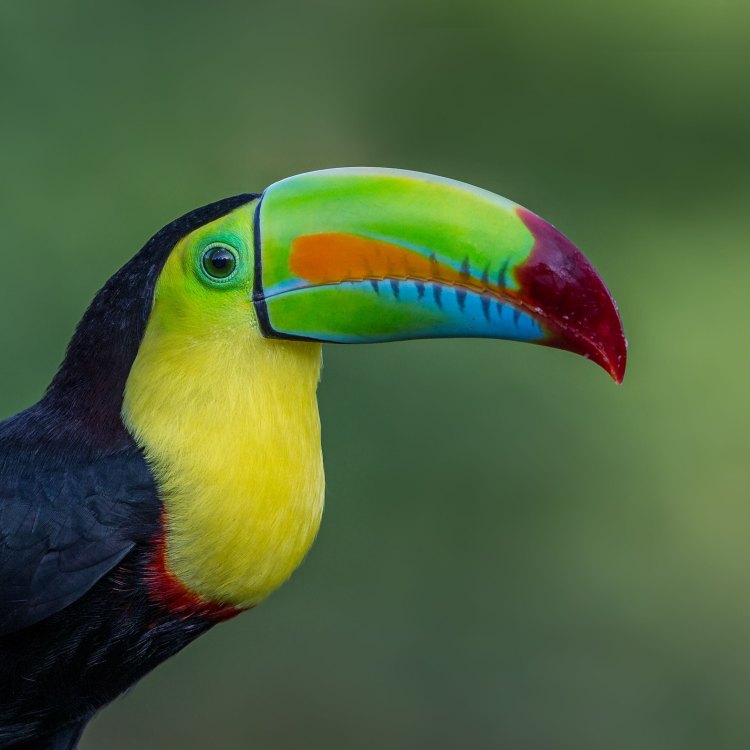
Toucan: The Magnificent Bird of the Tropical Rainforest
Disclaimer: The content provided is for informational purposes only. We cannot guarantee the accuracy of the information on this page 100%. All information provided here may change without prior notice.

